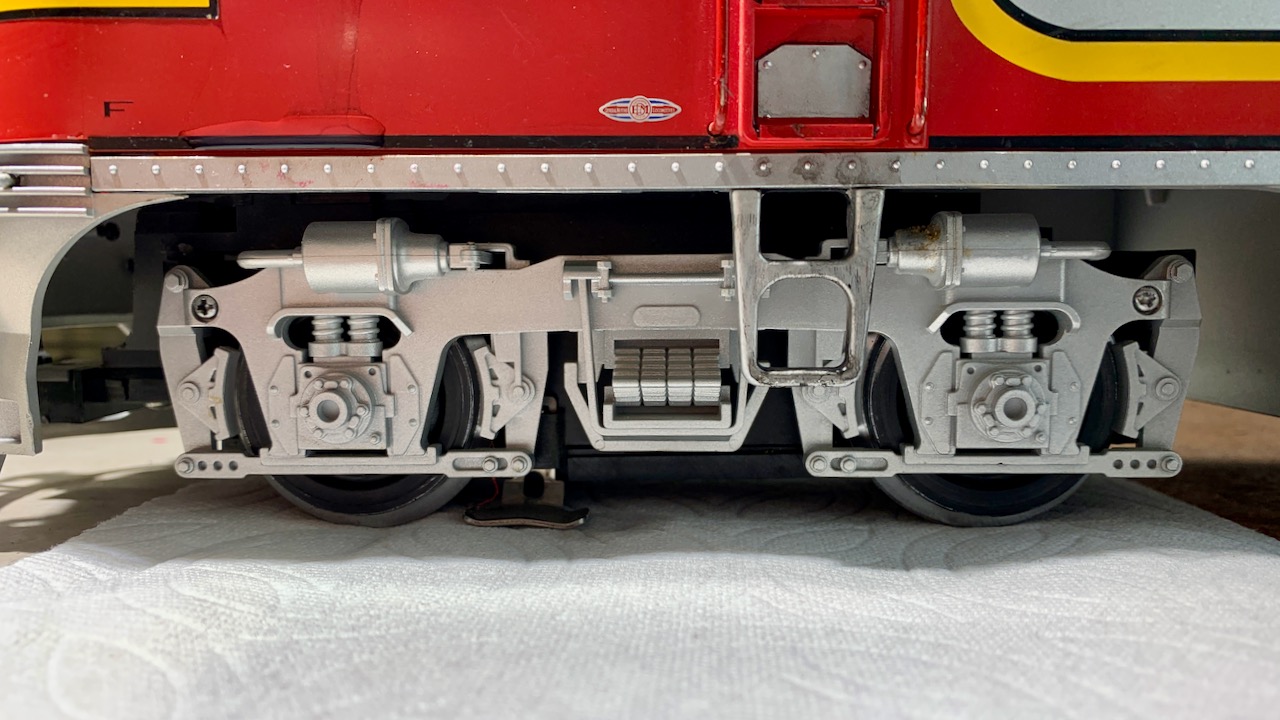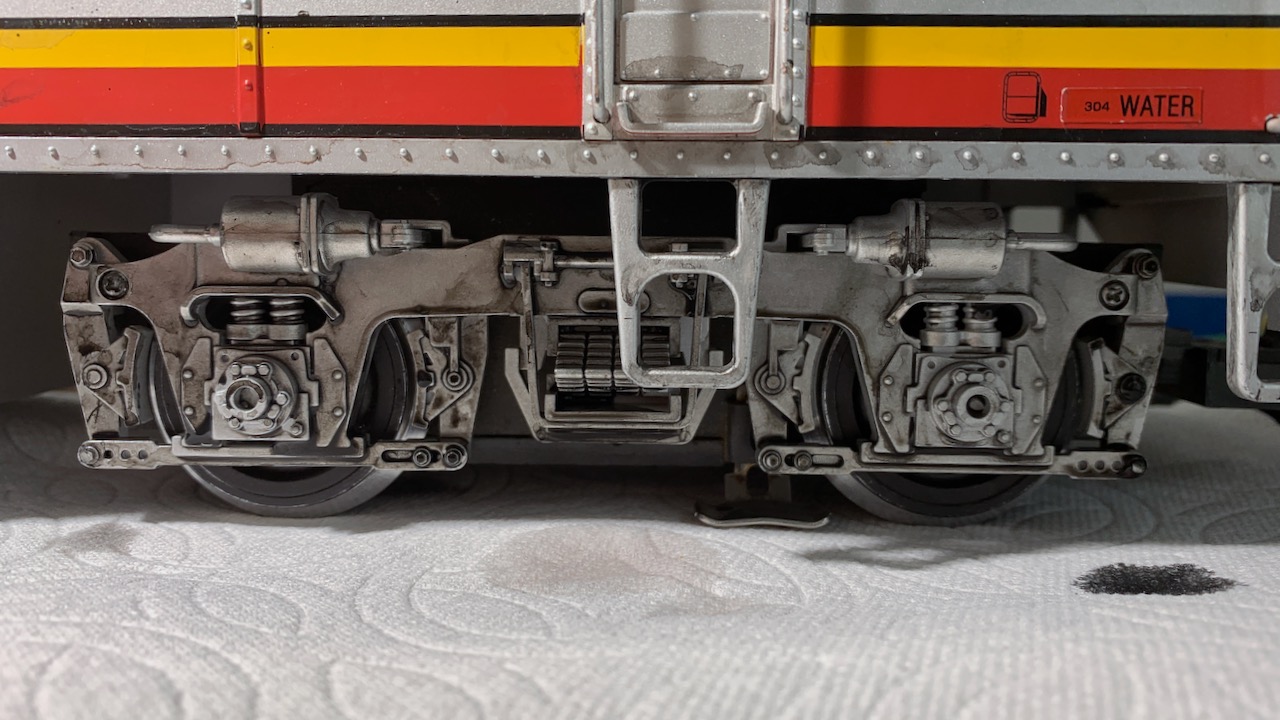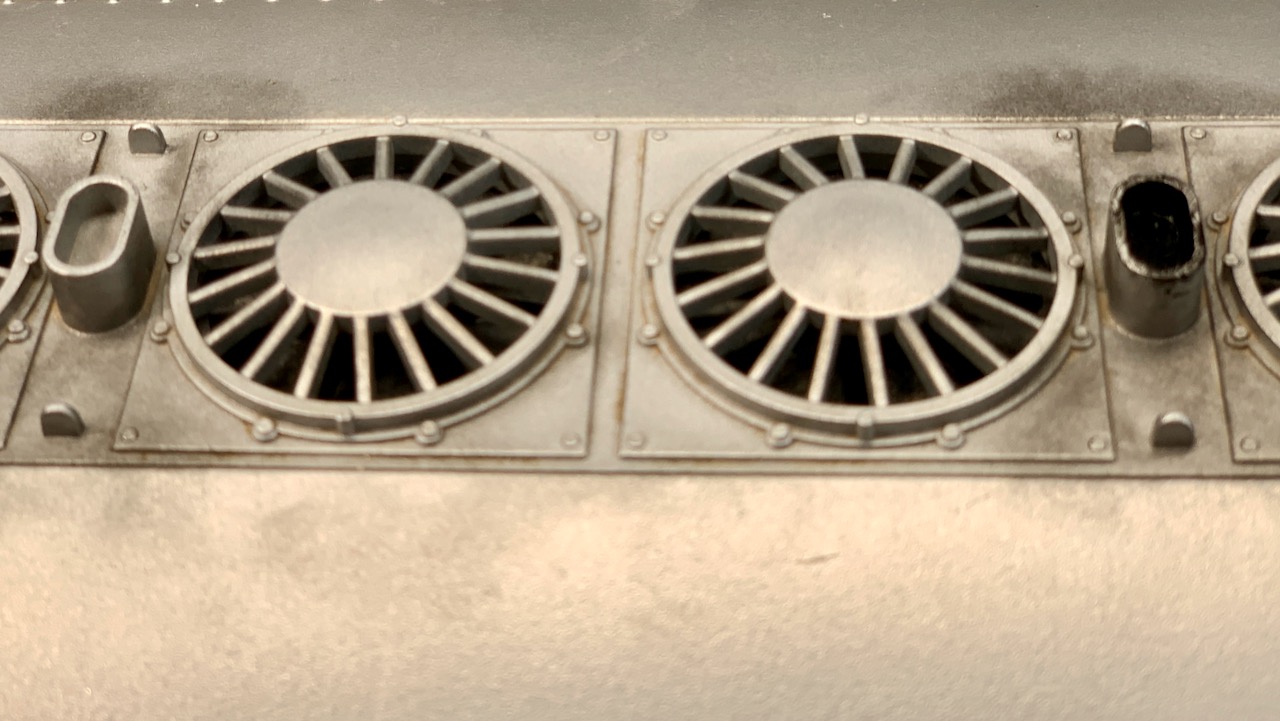One of the most controversial aspects of model railroading is weathering. I know two MMRs who have diametrically opposed views. One says, "If it ain't dirty, it ain't done." The other says, "I want my models to look like new." Most model railroaders fall somewhere in-between.
Here are some of my thoughts.
A thought for folks who want their models on the pristine side.
Even if your pike maintains equipment like D&RGW did with the California Zephyr in its heyday (they ran the entire train, passengers and all, through a wash rack in Denver so the windows would be clean for the daylight passage through the Rockies), in a few miles, the rolling stock will pick up dust and grime on the trucks.
So, on my garden Santa Fe passenger F7, I weathered the roof and the trucks. Weathering the trucks takes only a few minutes. The details popped out.
I used a good black acrylic paint from Vallejo. Set the loco on the bench with paper toweling under the wheels. With a medium brush, I applied a few dabs around on the side frames. IMMEDIATELY I used the same brush to apply lots water to the area and wash the paint down, allowing gravity to guide the process. Now you see the need for paper towels!
Work slowly up on it, adding a bit of paint and then washing it down. If you overdo it, more water will remove most of the "grime."
I did not take before and after photos. The next best thing, here are photos of two different trucks, one is done and the other is next.


The roof weathering was just adding to the exhaust grime that was put there by LGB - including painting the inside of the exhaust port, which was still shiny silver! I also did a bit of grime around the window gutters, where the rain would wash dirt from the roof.
Here is the roof. The stack on the left is as LGB did it. The one on the right I've added a bit to. The eye sees a deep hole, not a silver plug.


